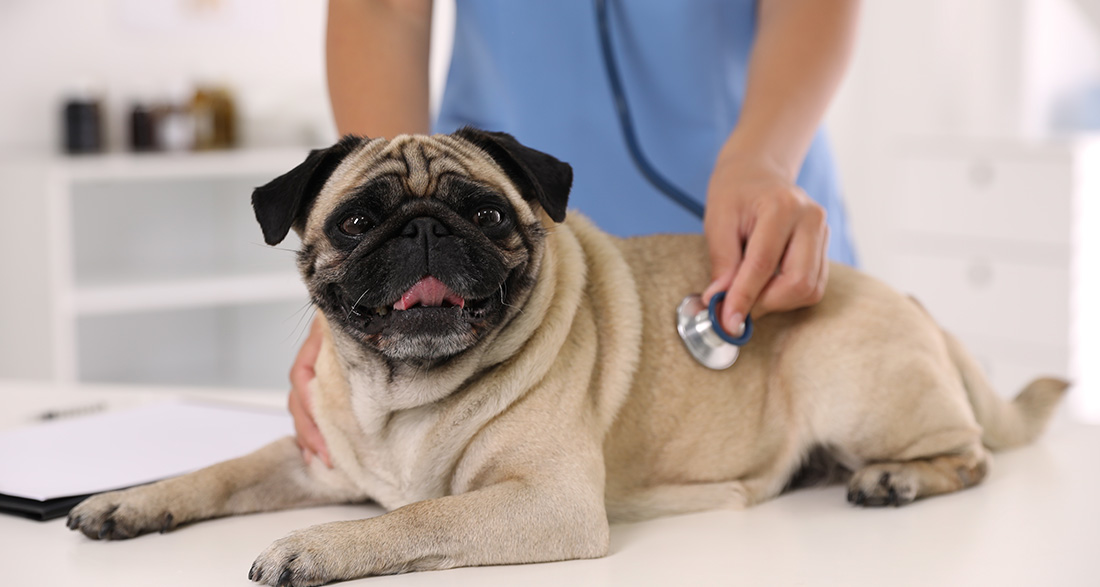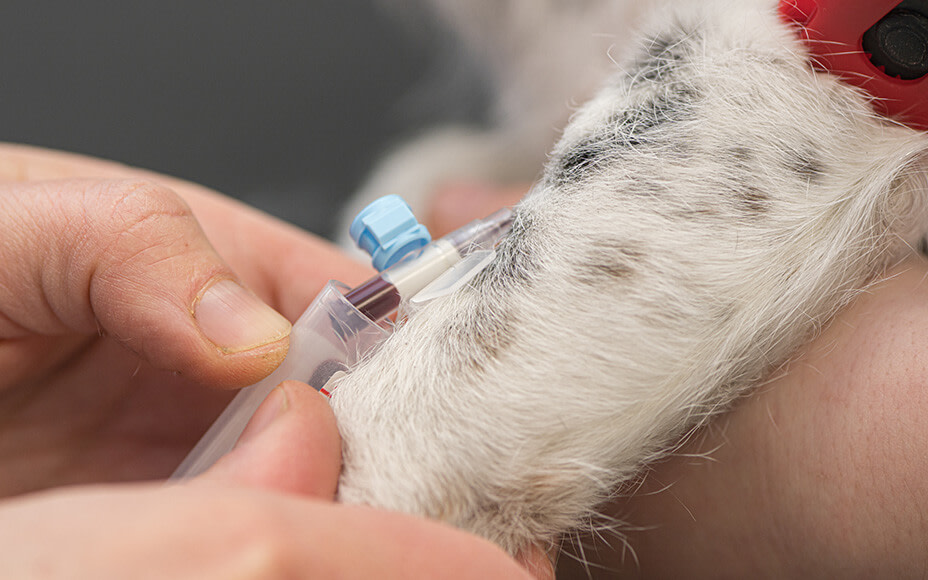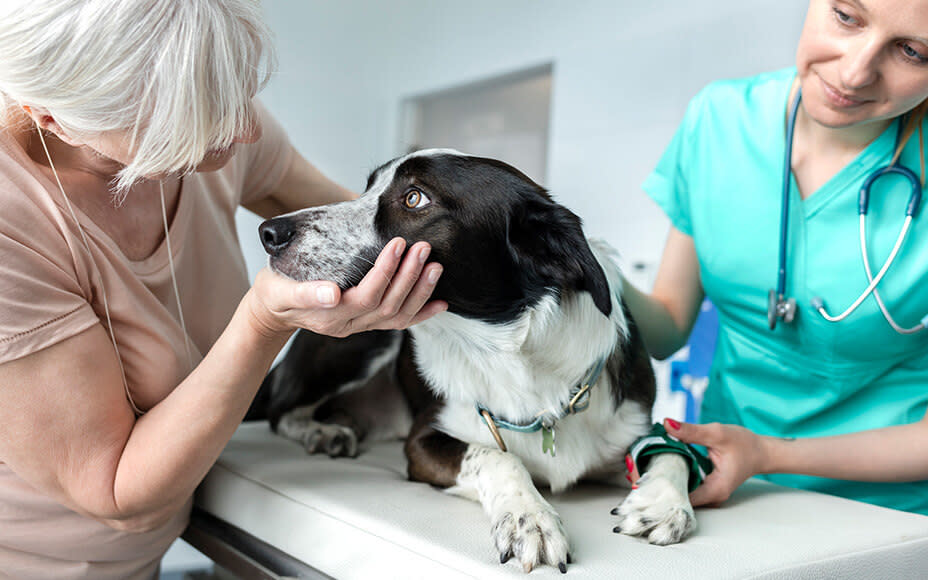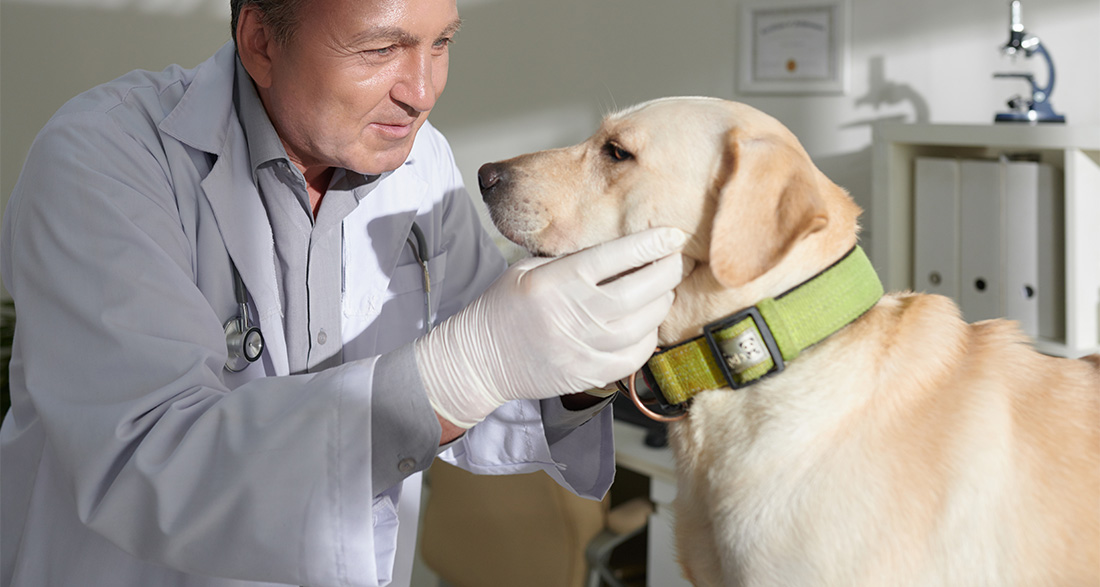Hypothyroidism is one of the most common disorders affecting hormone-producing organs in dogs, presenting with various symptoms. Our iHugDogs veterinarian, Sarah, explains the signs to look for and the treatment options in this article.
Help, My Dog Has Hypothyroidism
Hypothyroidism is one of the most common disorders affecting hormone-producing organs in dogs, exhibiting various symptoms. In this article, our iHugDogs veterinarian explains the symptoms of hypothyroidism, how it is diagnosed, and how it is treated.
What Exactly Is the Thyroid Gland?
The thyroid glands are paired organs located on either side of the trachea in dogs, just like in humans. They produce thyroid hormones, including thyroxine (T4) and triiodothyronine (T3), which play a role in many metabolic functions in the body.
The production of hormones is regulated by the pituitary gland and the hypothalamus. The hypothalamus sends signals to the pituitary gland, which, in turn, signals the thyroid gland to produce thyroid hormones. Dogs often suffer from hypothyroidism (underactive thyroid) and cats from hyperthyroidism (overactive thyroid).
How Do I Recognize Hypothyroidism?
Hypothyroidism is a condition that develops gradually over months to years. The disease is more common in older dogs, and certain breeds are more susceptible. Golden Retrievers, Labrador Retrievers, Dobermans, Cocker Spaniels, and German Shepherds are among the most commonly affected breeds.
Common Symptoms Symptoms are diverse and often nonspecific. Signs of hypothyroidism may include:
- Lethargy
- Reduced performance
- Increased need for sleep
- Unexplained weight gain
- Cold sensitivity

In 60-80% of affected dogs, skin changes also occur as symptoms. Dandruff, dry, dull, or greasy coat are common issues. Hair loss or, conversely, increased hair growth is possible. Hair loss often begins around the tail and tail base, referred to in medicine as “rat tail.”
Facial swelling due to fluid retention may make the faces of these furry friends appear somewhat swollen, giving them a tragic expression. In some cases, dogs may exhibit neurological symptoms, such as head tilt or paralysis. Gastrointestinal symptoms like diarrhea and vomiting may also occur.
As you can see, the disease can manifest in various ways. The gradual development sometimes makes it challenging to determine whether your four-legged friend’s symptoms are part of the normal aging process or if there is an underlying illness.
What Should I Do If I Notice Symptoms?
If you observe one or more of the mentioned symptoms in your furry friend, it is crucial to seek veterinary advice. These signs can also indicate other diseases, and only through a veterinary examination and further diagnostics can you help your four-legged friend.
How Is the Diagnosis of Hypothyroidism Made?
If your veterinarian suspects hypothyroidism based on the existing symptoms and the clinical examination, the next step is usually a blood test. Typically, blood cells and organ values, including thyroid hormones, are measured. These values are altered in hypothyroidism. Some dogs, due to the condition, may also exhibit other abnormalities in the blood, such as anemia or elevated cholesterol levels.
Depending on the levels of thyroid hormones, additional “stimulation tests” are often conducted. These tests measure thyroid hormones twice. A medication is administered between the measurements, which normally stimulates the release of thyroid hormones to see if the thyroid responds appropriately to the stimulus. Additional imaging studies, such as an ultrasound examination, can also be helpful.
Don’t worry; your veterinarian will explain your furry friend’s values to you precisely and choose the right treatment.

Not Always Are Altered Values Indicative of the Thyroid
Thyroid hormones can also be influenced by other diseases, making the interpretation of values somewhat challenging. For example, if another underlying condition is present, thyroid values may be low, even though the problem is not with the thyroid. Medications such as cortisone, often used to treat skin problems, as well as painkillers, can also affect thyroid values. The influence of thyroid hormones by other factors occurs because the thyroid is involved in many metabolic processes in the body and responds quickly to changes.
What Causes Hypothyroidism?
As you have already learned, the thyroid gland produces several thyroid hormones and is regulated by the pituitary gland and the hypothalamus. The cause of reduced thyroid function can either lie directly in the thyroid gland or in one of the two higher-order organs.
In over 95% of cases, the cause lies directly in the thyroid, a condition called primary hypothyroidism. There are two important forms.
- The first form, lymphocytic thyroiditis, is an inflammatory disease controlled by the immune system. Inflammatory cells invade the thyroid, and the body also produces antibodies against thyroid hormones. This diminishes function, and the production of thyroid hormones decreases.
- The second form is called idiopathic atrophy. “Idiopathic” means that the cause is unknown. In idiopathic atrophy, the hormone-producing thyroid tissue is destroyed without a discernible cause. In rare cases, a tumor can also destroy the thyroid and its function.
If the cause of hypothyroidism in your furry friend is outside the thyroid gland, this is called secondary hypothyroidism. This means that the hormone-producing cells of the pituitary gland or hypothalamus are damaged. However, this form occurs in only about 5% of cases.
Very rarely, there is also a so-called congenital hypothyroidism. In this case, the animals are born with a malformation of the thyroid. The prognosis in this case is very poor, and the puppies often die very early, but this occurrence is truly rare.

How Is Hypothyroidism Treated?
Your four-legged friend has been diagnosed with hypothyroidism, and you wonder how to treat it? Here’s the good news: In most cases, hypothyroidism is well treatable, and symptoms usually disappear completely. The lacking natural thyroid hormones are typically replaced by the synthetic hormone levothyroxine. This means that you have to give your furry friend tablets every day for their entire life.
To find the correct dosage of the medication, your furry friend will need several follow-up blood tests. Usually, the first follow-up examination takes place about four weeks after the start of therapy. If the follow-up examinations go well, and your pet responds well to the medication, it is sufficient to have the blood checked every 4-6 months by a veterinarian.
Here’s more good news: A well-managed hypothyroidism with medication allows your furry friend to have a normal life expectancy. So, you can look forward to many long cuddle sessions with your furry companion.
The basis for a healthy, long dog life is a healthy diet. Have you tried our delicious and healthy sample packs? Whether dry, wet, or raw: Explore our extensive range and find your pet’s new favorite food!


